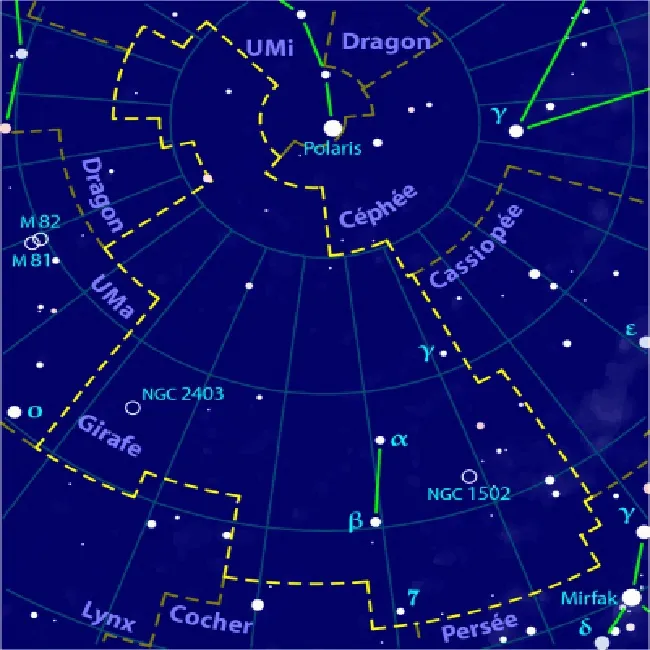
Camelopardalis is a faint and large constellation located in the northern sky. Its name is derived from the Latin word for "giraffe," which itself comes from the Greek words "kamēlos" (camel) and "pardalis" (leopard), due to the giraffe's long neck and spotted coat. The constellation is relatively obscure and consists of faint stars, making it a challenge to spot without clear, dark skies.
Key Features
Camelopardalis is the 18th largest constellation in the sky, covering an area of 757 square degrees. Despite its size, it lacks any particularly bright stars, which is why it is often overlooked. The constellation does not have any Messier objects, but it does contain a few notable deep-sky objects, including the open clusters NGC 1502 and Kemble’s Cascade, a beautiful asterism that appears as a chain of stars.
Mythology
Unlike many other constellations, Camelopardalis does not have a rich mythological background. It was first introduced by the Dutch astronomer Petrus Plancius in 1613, based on observations by the Dutch explorer and astronomer Jakob Bartsch. It was intended to fill the space between the constellations Ursa Major and Cassiopeia, which were more prominent in the night sky.
Notable Stars
- Beta Camelopardalis: The brightest star in Camelopardalis, Beta Camelopardalis, is a yellow-hued giant with a magnitude of approximately 4.03, making it difficult to see with the naked eye unless under optimal conditions.
- CS Camelopardalis: This is a binary star system with an apparent magnitude of 4.2. It’s slightly brighter than most stars in the constellation but still requires a good telescope for proper observation.
Visibility
Camelopardalis is best seen in the northern hemisphere during the winter months. It is visible between latitudes 90° and -10°. Due to its faint stars, dark skies away from city lights are essential for observing this constellation.
Tips for Observing
- Use Binoculars or a Telescope: Because Camelopardalis is composed of faint stars, binoculars or a small telescope will help you spot its key features more easily.
- Look for Nearby Constellations: Start your search by locating the more prominent constellations of Ursa Major, Cassiopeia, or Perseus. Camelopardalis lies in the area between these constellations.
- Observe on a Clear, Moonless Night: Light pollution and moonlight can make it nearly impossible to see Camelopardalis with the naked eye. For best results, observe from a location with minimal light pollution on a clear, dark night.
